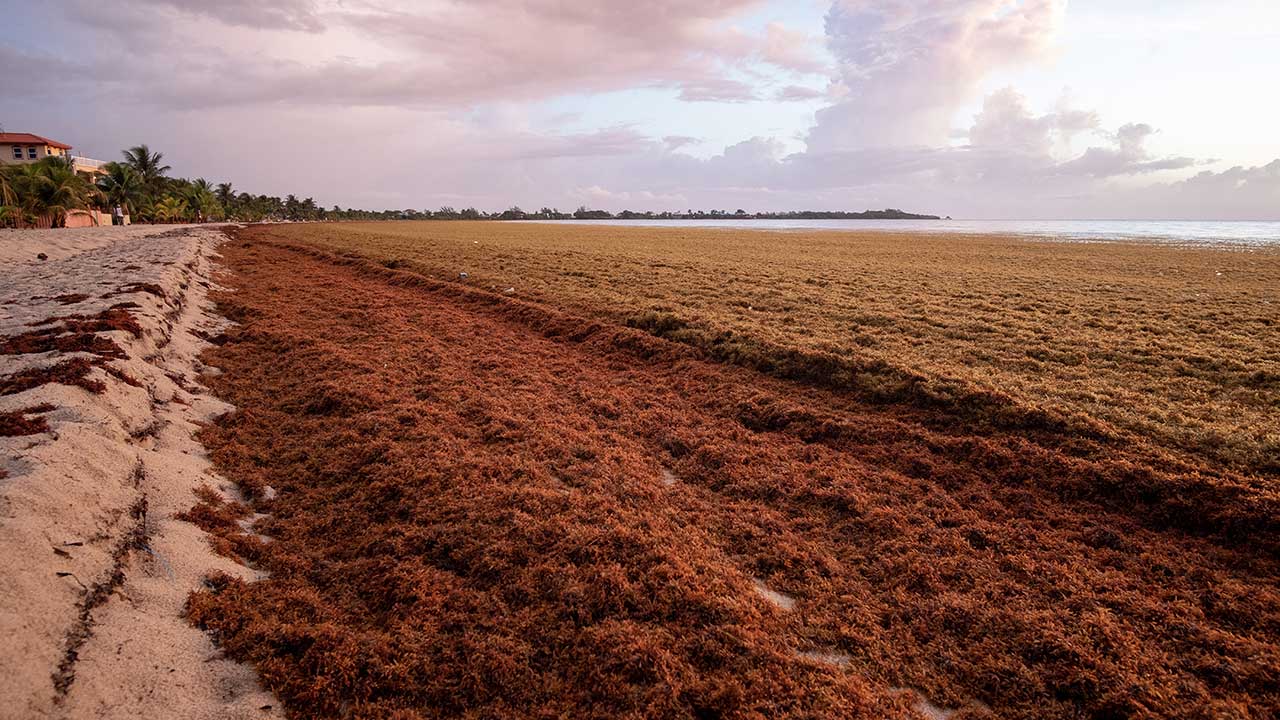
The Great Atlantic Sargassum Belt, a giant seaweed tide visible from space is threatening the beaches in the Gulf of Mexico and the Caribbean. Read to know how it is negatively impacting the local ecosystem and tourism.
What is the Great Atlantic Sargassum Belt a problem?
A huge seaweed tide in the Caribbean and the Gulf of Mexico is now threatening the beaches in the regions. The Great Atlantic Sargassum Belt spreads across 5,000 miles, which could cause great problems as the ocean current is pushing it towards the land. As per Brain LaPointe, the situation, despite the alarming rate, is “incredible”. However, “what we’re seeing in the satellite imagery does not bode well for a clean beach year”. LaPointe is a researcher at Florida Atlantic University’s Harbor Branch Oceanographic Institute.
Seaweed is good for the planet as it can absorb carbon emissions. Additionally, they can be used as a renewable material. Seaweed or sargassum generally washes ashore around May every year. However, the large quantity means the beaches are already covered. Moreover, the large quantities near the beach are an issue. In addition to reducing the water and air quality, they rot and deter tourism.
More on the seaweed problem
The Sargassum belt also chokes coral, in addition to creating several disastrous consequences for local ecosystems. Last year the US Virgin Islands was forced to declare an emergency after the masses of seaweed led to a water shortage. Currently, the mass reaches from the West African coast to the Americas. It is expected to weigh about 20 million tons.
“Even if it’s just out in coastal waters, it can block intake valves for things like power plants or desalination plants, marinas can get completely inundated and boats can’t navigate through,” stated Brian Barnes. Barnes is an assistant professor at the University of South Florida’s College of Marine Science. “It can threaten critical infrastructure. “Historically, as far back as we have records, Sargassum has been a part of the ecosystem, but the scale now is just so much bigger,” he added.
